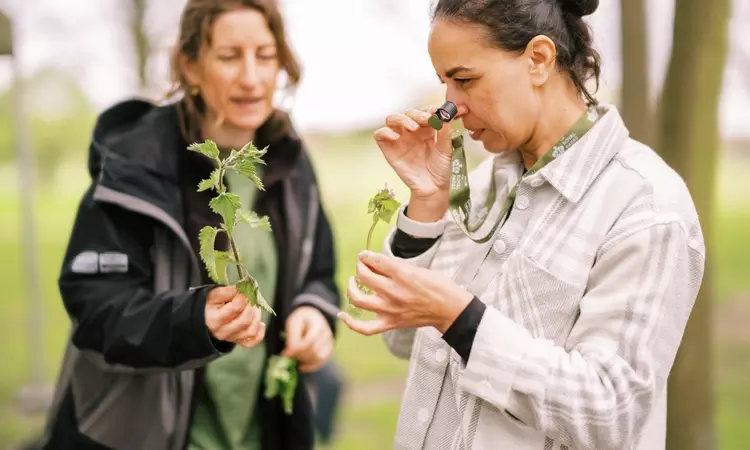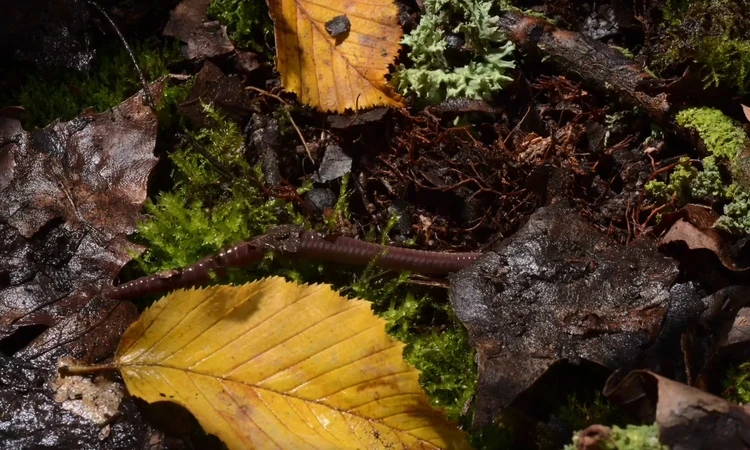
The sounds of St. James's Park
Invertebrate populations are a good indicator of the health of our ecosystems
All other life depends on them, as recyclers, pollinators, pest-controllers, sources of food and the cornerstone of biodiversity. Decline in numbers and diversity of insects is being recognised around the world, and can be attributed largely to human activities such as urbanisation, industrialisation and intensive agriculture. Conservation organisations, including The Royal Parks charity are working to reverse this decline through habitat creation and restoration, awareness raising and advocacy.
The Royal Parks’ Sounds of the Undergrowth project highlights the connection between human activities and the health of our insect populations. Using St. James’s Park as a case study, we have bought to life the changing London landscape over the last 500 years and the sights and sounds of invertebrates and other wildlife that have accompanied it. Watch the videos below and listen to the changing sights and sounds of St. James’s through the years.
This work was made possible thanks to players of People’s Postcode Lottery who have raised an incredible £6.4 million so far to conserve and celebrate biodiversity in the Royal Parks.
Medieval Marshland
Before it became a royal park, St. James’s Park was marshland in the floodplain of the River Tyburn, which flowed from Hampstead Heath, through The Regent's Park and The Green Park before splitting in two to meet the Thames in what is now Westminster. Teeming with wildlife, it was visited by flocks of wetland birds, throngs of buzzing insects and a variety of small mammals and amphibians. If we were able to visit, we might see dragonflies hunting, herons nesting, and even the flash of a kingfisher, and hear the churring jit jit jit song of reed warblers.
The 16th and 17th Centuries
The marshland was ideal for deer hunting and in 1536 Henry VIII created a deer park. The park stayed largely the same until 1603 when James I became king. Improving the drainage of the land meant that James could house his growing menagerie, which included an elephant, camels, a crocodile, and exotic birds kept in birdcages along what is now Birdcage Walk. Later Charles II straightened the lake edges and created a much more formal park. Visitors would have seen many pollinators such as bees and butterflies flitting around the new formal flower beds.
The 19th and 20th Centuries
The entire park was redesigned by John Nash in the 1820’s creating a more natural looking lake. St. James’s was a lovely formal park, although primarily managed with people in mind, and there was far less knowledge of the importance of managing landscape for biodiversity. Visitors will have enjoyed seeing pelicans, ducks and geese, but as time passed they would have seen and heard fewer and fewer invertebrates.
Present and Future
Thanks to an effort to improve habitats, St. James’s Park is now seeing an increase in wildlife species. Reed beds and wildflowers grow along the banks of the lake, with further habitat creation and enhancement works planned. Visitors will see and hear more flying insects such as dragonflies, bees, butterflies and moths, and the creatures that feed on them, including reed warblers, songbirds, bats and amphibians.
Related Articles
-
 Read
ReadThe wonderful weeds of The Royal Parks
Resident expert Gemma Hindi from the Help Nature Thrive team shares her knowledge, passion and experience of the ecological importance of weeds.
-
 Read
ReadExplore the Royal Parks with Help Nature Thrive's bug trails
These self-led walks will help you discover more about our conservation initiatives and introduce you to some of the Parks smallest inhabitants.
-
 Read
ReadSoil is Alive
The Royal Parks is unearthing the value of our soils, through an action plan of research, conservation and landscape management within the Parks.